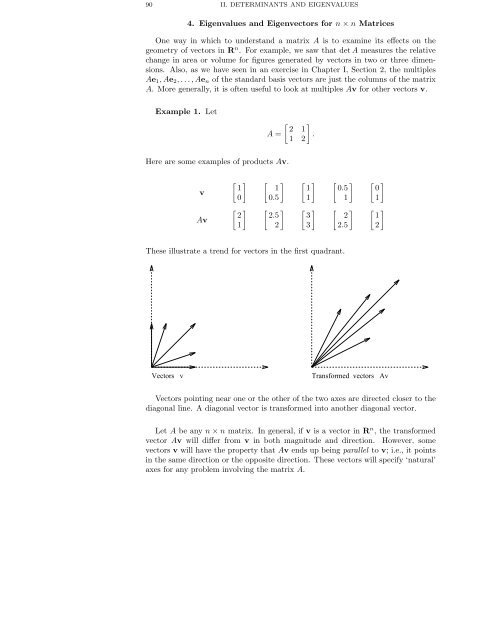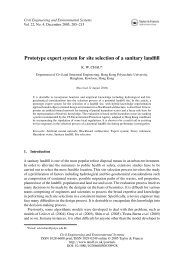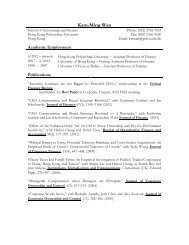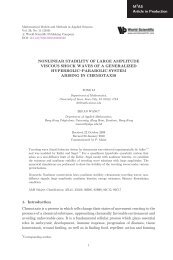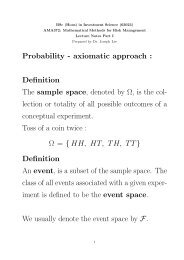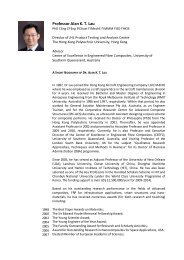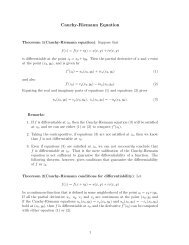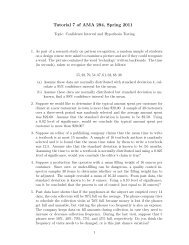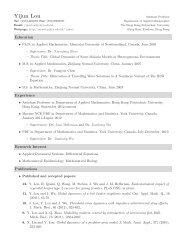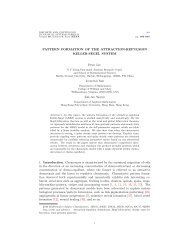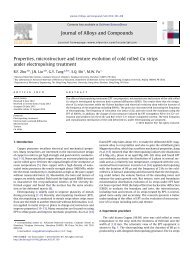DETERMINANTS AND EIGENVALUES 1. Introduction Gauss ...
DETERMINANTS AND EIGENVALUES 1. Introduction Gauss ...
DETERMINANTS AND EIGENVALUES 1. Introduction Gauss ...
Create successful ePaper yourself
Turn your PDF publications into a flip-book with our unique Google optimized e-Paper software.
90 II. <strong>DETERMINANTS</strong> <strong>AND</strong> <strong>EIGENVALUES</strong>4. Eigenvalues and Eigenvectors for n × n MatricesOne way in which to understand a matrix A is to examine its effects on thegeometry of vectors in R n . For example, we saw that det A measures the relativechange in area or volume for figures generated by vectors in two or three dimensions.Also, as we have seen in an exercise in Chapter I, Section 2, the multiplesAe 1 ,Ae 2 ,...,Ae n of the standard basis vectors are just the columns of the matrixA. More generally, it is often useful to look at multiples Av for other vectors v.Example <strong>1.</strong> LetA =[ ]2 <strong>1.</strong>1 2Here are some examples of products Av.vAv[ ] [ [ [ [ ]1 1 1 0.5 00 0.5]1]1]1[ ] [ ] [ ] [ [ ]2 2.5 3 2 11 2 3 2.5]2These illustrate a trend for vectors in the first quadrant.Vectors vTransformed vectors AvVectors pointing near one or the other of the two axes are directed closer to thediagonal line. A diagonal vector is transformed into another diagonal vector.Let A be any n × n matrix. In general, if v is a vector in R n , the transformedvector Av will differ from v in both magnitude and direction. However, somevectors v will have the property that Av ends up being parallel to v; i.e., it pointsin the same direction or the opposite direction. These vectors will specify ‘natural’axes for any problem involving the matrix A.


